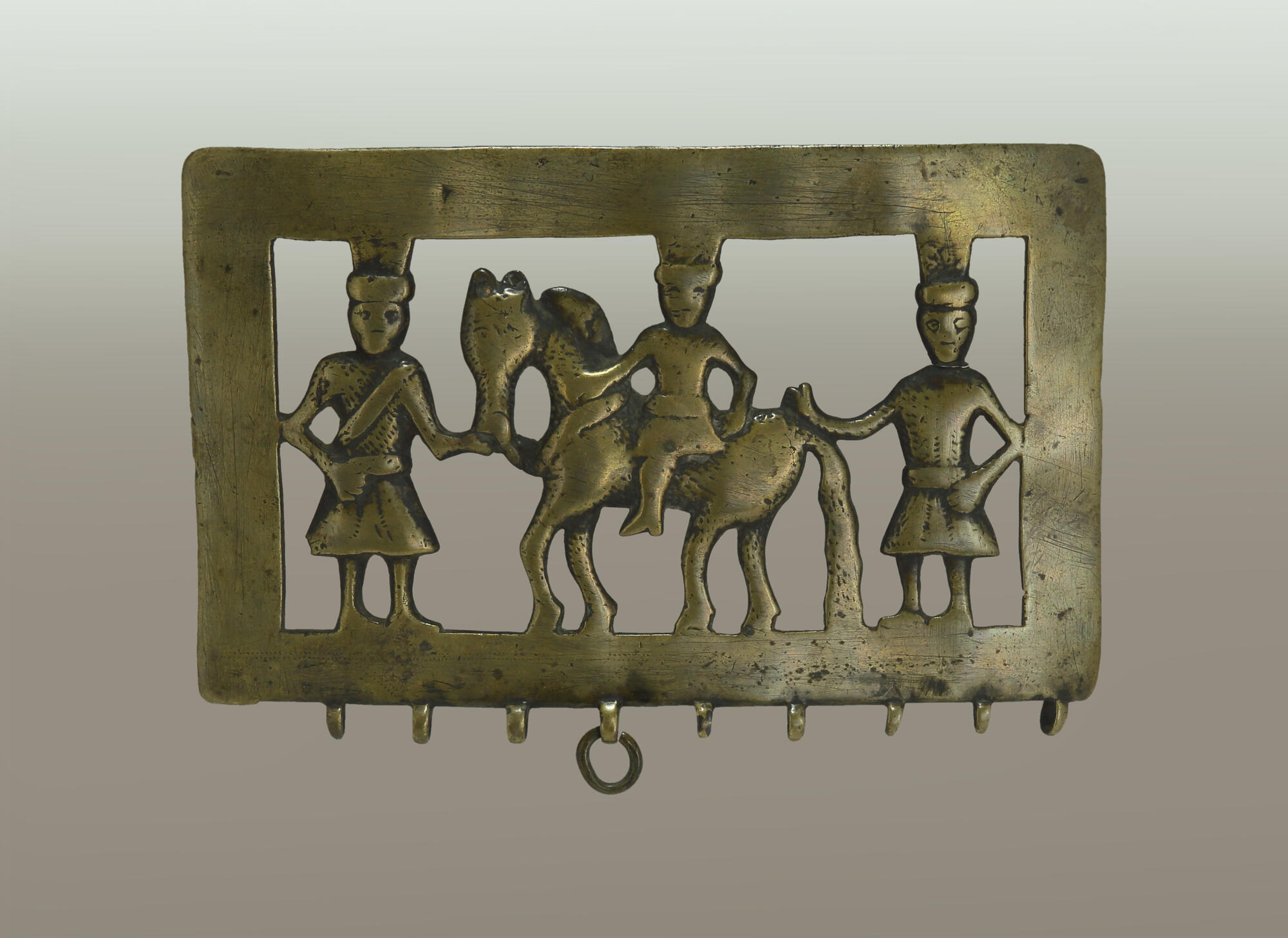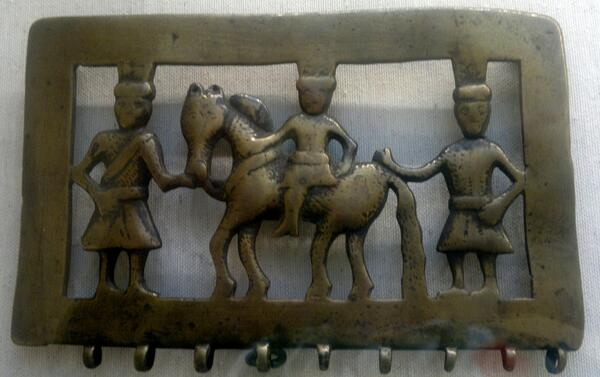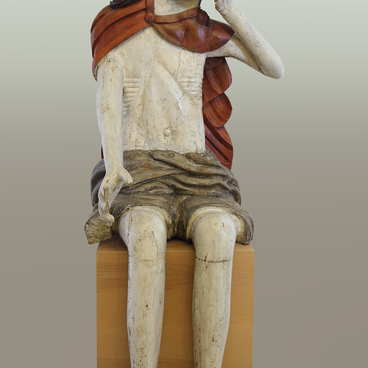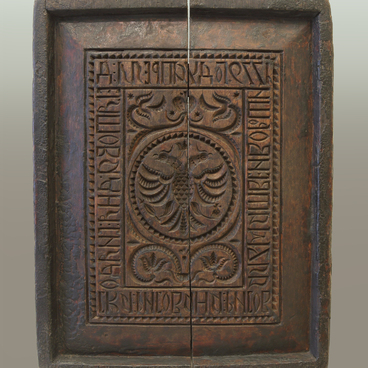Horse-doctors’ badges were large rectangular copper alloy plates that featured a horse-rider flanked by two horse-doctors: one of them was holding the horse by the bridle, while the second one was pushing it from behind. In the old days, there was a special Russian word — “konoval”. It was used to describe a self-educated veterinarian, who castrated and treated diseased or injured animals: horses, bulls, rams, and other domestic animals.
Each horse-doctor carried a special bag with tools that included a steel knife, a whetstone for sharpening it, iron pliers, needles, steel hatchets, a vise, lancets, bowls, oak mallets and herbal medicines for dressing wounds.
This was a specific job performed by peasants, who left the place of their permanent residence in order to treat domestic animals. This type of work was called “otkhodnichestvo” (from the Russian word meaning “to leave, to depart”).
The largest number of horse-doctors worked in Mezensky Uezd of Arkhangelsk Governorate. In the 19th — early 20th centuries, a tradition of making these badges developed in the village of Kimzha on the Mezen. It was associated with the name of the craftsman Vasily Alekseevich Deryagin, who introduced Kimzha to the art of casting, which he brought from the Urals in 1847. The villagers, who lived in Olema, recollected that Kimzha was known as the place where it was possible to commission a badge with any shape of a horse to suit any taste.
Polished to a shine, such a badge was a kind of an advertisement, a professional emblem of a wandering horse-doctor, so that their profession could be easily recognized. People believed that horse-doctors were not just medical professionals treating domestic animals. Horse-doctors were primarily considered enchanters and healers. In Kimzha, they were called “chernotropy” meaning “black sorcerers”.
The horse-doctors’ badges from the permanent exhibition of the Russian Museum are not the only surviving ones — there are similar items in other museum collections. All exhibits vary from each other. There are disparate images of horses and people, and sometimes the number of characters is not always the same. Some figures are more realistic and refined, while the images featured by other badges are rather primitive: horses and people are rendered schematically, with a minimum of details, and the forms are more flat.
There are two groups of horse-doctors’ badges: three-dimensional, manufactured in the technique of relief casting, and flat plates, made by punching the outlines in the metal. Casters knew the techniques of engraving and stamping, so they were able to decorate copper badges with the images of facial features, clothes, triangular notches, and circular patterns on the frame.
Each horse-doctor carried a special bag with tools that included a steel knife, a whetstone for sharpening it, iron pliers, needles, steel hatchets, a vise, lancets, bowls, oak mallets and herbal medicines for dressing wounds.
This was a specific job performed by peasants, who left the place of their permanent residence in order to treat domestic animals. This type of work was called “otkhodnichestvo” (from the Russian word meaning “to leave, to depart”).
The largest number of horse-doctors worked in Mezensky Uezd of Arkhangelsk Governorate. In the 19th — early 20th centuries, a tradition of making these badges developed in the village of Kimzha on the Mezen. It was associated with the name of the craftsman Vasily Alekseevich Deryagin, who introduced Kimzha to the art of casting, which he brought from the Urals in 1847. The villagers, who lived in Olema, recollected that Kimzha was known as the place where it was possible to commission a badge with any shape of a horse to suit any taste.
Polished to a shine, such a badge was a kind of an advertisement, a professional emblem of a wandering horse-doctor, so that their profession could be easily recognized. People believed that horse-doctors were not just medical professionals treating domestic animals. Horse-doctors were primarily considered enchanters and healers. In Kimzha, they were called “chernotropy” meaning “black sorcerers”.
The horse-doctors’ badges from the permanent exhibition of the Russian Museum are not the only surviving ones — there are similar items in other museum collections. All exhibits vary from each other. There are disparate images of horses and people, and sometimes the number of characters is not always the same. Some figures are more realistic and refined, while the images featured by other badges are rather primitive: horses and people are rendered schematically, with a minimum of details, and the forms are more flat.
There are two groups of horse-doctors’ badges: three-dimensional, manufactured in the technique of relief casting, and flat plates, made by punching the outlines in the metal. Casters knew the techniques of engraving and stamping, so they were able to decorate copper badges with the images of facial features, clothes, triangular notches, and circular patterns on the frame.



